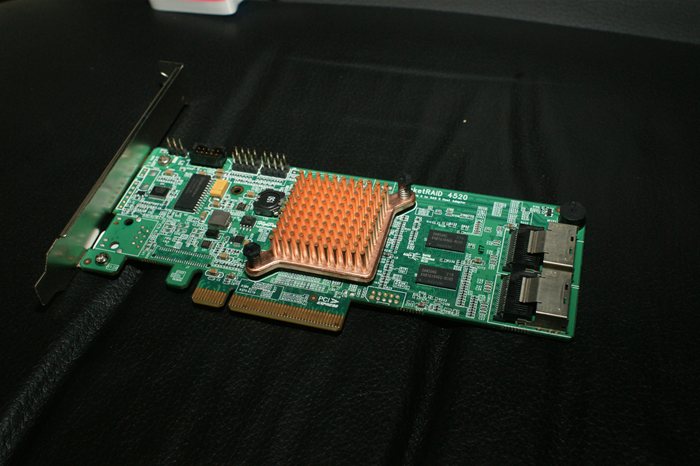
Feb 21, 2013 by Paul White
I took a gamble and decided to try Highpoint's latest flagship Raid Card ( RocketRaid 4520 ) for my new web server. Naturally when I get a new piece of hardware I like to put it through some benchmarks to see if it really performs the way it should. When this combined with your Operating System's Buffering and Caching this card is Excellent, but when Direct I/O is tested is falls short. To make a long story short, the Rocketraid 4520 does not perform well for IOPS at 4K. I have already contacted HighPoint and they inferred that their engineering team is aware of this, and are working on a new firmware that should fix the issues.
10 Comments
12676 Visitors
12676 Views
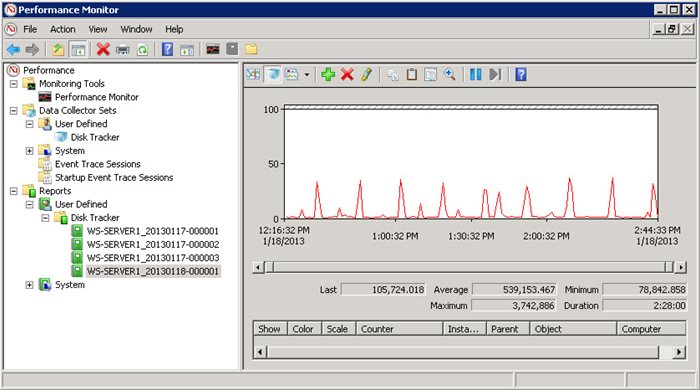
Jan 18, 2013 by Paul White
Before anyone considers throwing an SSD into your server, its important to be sure your server is not going to destroy that SSD with writes after a few months. In this guide I will show you how to use Performance monitoring in Windows Server 2008 R2 to determine what kind of write activity your server is currently doing. Then after that we can calculate our daily and annual writes, allowing us to determine how long that shiny new SSD will last in our server.
13973 Visitors
13973 Views
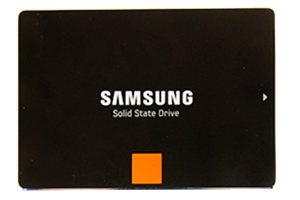
Dec 30, 2012 by Paul White
I am currently building a new Server for Colocation. This time around I am going to use SSD drives instead of the 15K SAS drives. Even though the 15K SAS drives have been reliable performers, the newest SSD drives simply blow them away in terms of IO. However SSD drives have a few issues you should be aware of. Wear Leveling! But before you decided that SSD drives are too much risk for your server, do the math, and ask yourself, how much writing does your server really do.
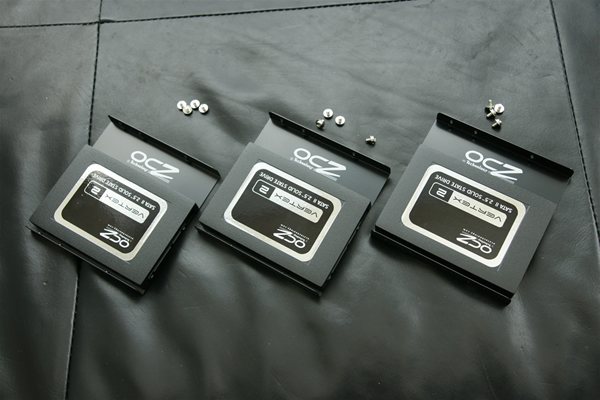
Nov 19, 2010 by Paul White
So I finally have made the move to SSD. Unlike many who went with a single SSD drive I went with an SSD raid 0 Array. Using 3 OCZ Vertex 2 60 GB SSD drives, I setup a RAID 0 array on my ASUS P6T Deluxe Motherboard's built in Intel ICH10R SATA controller. The benchmarks were outstanding. Maybe I could have gotten a little better performance from using a dedicated RAID card, but 700 MB/sec read and write is good enough for me.
3 Comments
15552 Visitors
15552 Views
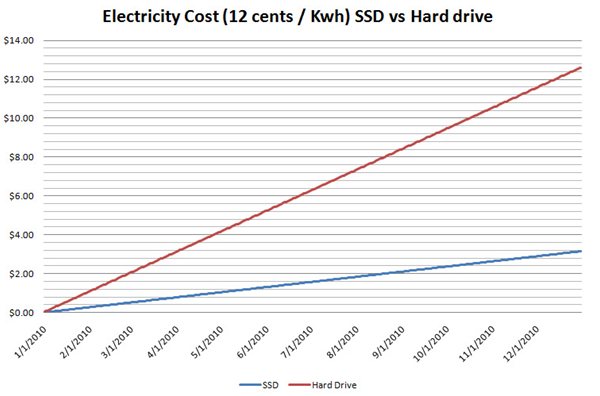
Apr 12, 2010 by Paul White
I guess SSD drives have finally caught the eye of the joe average consumers, because the other day a client of mine called asking if they should upgrade to an SSD drive. So I went about explaining to him the difference between traditional platter based storage hard drives and SSD ( Solid State Drives ). Then I got to think that my explanation might be better suited for a blog entry. So here it is.
1 Comments
13791 Visitors
13791 Views
Oct 14, 2009 by Paul White
I got my RocketRAid 4310 PCI-e x8 Card today. This was supposed to give me some excellent speed on my 4 15K SAS drives, allowing me to get this system quickly setup and colocated. Instead the server doesn't seem to like the card. Read more for the lastest on my Server Build.
Sep 10, 2009 by Paul White
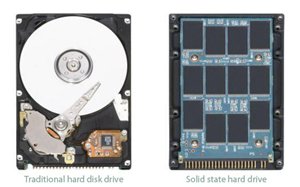
After some thinking about SSD hard drives, and looking for a logical reason to upgrade to them in my system, I have finally found the reason. Conservation is the name of the game.
Feb 19, 2009 by Paul White
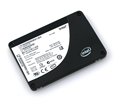
In past blogs I have talked about the reason I decided to go with my Dual SAS drives instead of jumping to the newer SSD drives.The guys over at PC Perspective have published an article recently that basically backed up my theories. If you want to use your computer long term you are better off staying away from SSD drives for now.
Jan 30, 2009 by Paul White
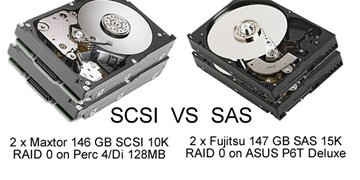
Now that the server world is heavily adopting SATA drives and SAS drives for those who want extra performance, there are a lot of people wondering how this technology compares to the old IDE and SCSI drives. Time for some performance benchmarks to put this question to rest.
15 Comments
52947 Visitors
52947 Views
Dec 11, 2008 by Paul White
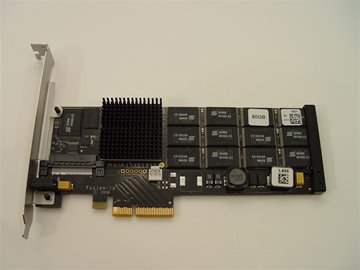
Fusion IO has a new SSD (solid state disk ). Except this one doesn't connect with your typical SATA or SAS connectors. This drive is card based. Thats right you mount it on one of your available PCIe slots (assuming you still have one available ). Since your PCIe slot can support up to 10 GB/sec transfers this is a huge jump in performance. While other manufactureres are trying to pack NAND flash memory into 2.5 and 3.5 inch packages. Fusion IO has skipped this step all together. After building my own workstation based on dual SAS drives in a RAID 0 configuration. I feel like my system has just depreciated overnight. For more specs click read
 WhiteSites Blog
WhiteSites Blog





 After some thinking about SSD hard drives, and looking for a logical reason to upgrade to them in my system, I have finally found the reason. Conservation is the name of the game.
After some thinking about SSD hard drives, and looking for a logical reason to upgrade to them in my system, I have finally found the reason. Conservation is the name of the game. In past blogs I have talked about the reason I decided to go with my Dual SAS drives instead of jumping to the newer SSD drives.The guys over at PC Perspective have published an article recently that basically backed up my theories. If you want to use your computer long term you are better off staying away from SSD drives for now.
In past blogs I have talked about the reason I decided to go with my Dual SAS drives instead of jumping to the newer SSD drives.The guys over at PC Perspective have published an article recently that basically backed up my theories. If you want to use your computer long term you are better off staying away from SSD drives for now. Now that the server world is heavily adopting SATA drives and SAS drives for those who want extra performance, there are a lot of people wondering how this technology compares to the old IDE and SCSI drives. Time for some performance benchmarks to put this question to rest.
Now that the server world is heavily adopting SATA drives and SAS drives for those who want extra performance, there are a lot of people wondering how this technology compares to the old IDE and SCSI drives. Time for some performance benchmarks to put this question to rest.  Fusion IO has a new SSD (solid state disk ). Except this one doesn't connect with your typical SATA or SAS connectors. This drive is card based. Thats right you mount it on one of your available PCIe slots (assuming you still have one available ). Since your PCIe slot can support up to 10 GB/sec transfers this is a huge jump in performance. While other manufactureres are trying to pack NAND flash memory into 2.5 and 3.5 inch packages. Fusion IO has skipped this step all together. After building my own workstation based on dual SAS drives in a RAID 0 configuration. I feel like my system has just depreciated overnight. For more specs click read
Fusion IO has a new SSD (solid state disk ). Except this one doesn't connect with your typical SATA or SAS connectors. This drive is card based. Thats right you mount it on one of your available PCIe slots (assuming you still have one available ). Since your PCIe slot can support up to 10 GB/sec transfers this is a huge jump in performance. While other manufactureres are trying to pack NAND flash memory into 2.5 and 3.5 inch packages. Fusion IO has skipped this step all together. After building my own workstation based on dual SAS drives in a RAID 0 configuration. I feel like my system has just depreciated overnight. For more specs click read